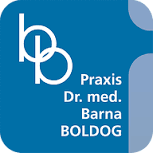Please use Microsoft Edge, Google Chrome or [Firefox](https://getfirefox. com/).
Radiologie am Graben (Winterthur)
Do you own or work for Radiologie am Graben?
About Us
X-rays - FAQ
What is X-ray radiation? How is X-ray radiation produced? Are X-rays harmful? What is the radiation dose during an X-ray or CT scan?
What is X-ray radiation?
Radiation means transport of energy in the form of waves (photon radiation) or particles (corpuscular radiation). X-ray radiation is photon radiation, so it consists of electromagnetic waves. In addition to X-rays, the spectrum of electromagnetic waves also includes e.g. radio waves, microwaves, infrared, visible light or UV light. The difference is in the wavelength (which is very small for X-rays) and in the energy (which is very large for X-rays).
X-rays are not corpuscular radiation, as produced by the radioactive decay of atomic nuclei, so they are not α- or β-radiation. γ-radiation (a photon radiation also produced in radioactive decay) is shorter wavelength and higher energy than X-rays.
top
How is X-ray radiation produced?
An X-ray tube consists of a highly evacuated glass bulb containing a cathode and an anode. The cathode, a tungsten wire, is heated by a heating current to such a high temperature that it emits electrons. These electrons are accelerated toward the anode by applying a high voltage and decelerated in the surface layers of the anode material (usually tungsten). Most of the electron energy (approx. 99%) is thus converted into heat. Only a small fraction of the electrons pass through the electric field of an anode atomic core and are deflected from their original direction of motion by the electric attraction of the core. This deflection is associated with a loss of energy from the electron, which is emitted in the form of photon radiation, or X-rays. This photon radiation subsequently penetrates the patient's organ to be examined and subsequently hits the X-ray film or digital detector plate, where the X-ray image is generated.
top
Are X-rays harmful?
Due to their high energy, X-rays, unlike the electromagnetic waves of light or microwaves, are considered ionizing. This means that they are able to remove electrons from atomic shells, creating charged particles, ions. If this ionization takes place in the body, it can lead to molecular changes in nucleic acids (DNA), proteins or enzymes via chemical and biochemical reactions. This in turn results in cellular changes that can cause damage in the irradiated individual (somatic cells) or damage in the offspring (germ cells).
Damage to DNA also occurs spontaneously in our body cells: within one minute, approximately the same amount of damage occurs spontaneously in a cell as would occur with a radiation dose of 10 mSv (mSv = millisievert, unit of radiation dose). Our body cells have an excellent repair system to repair this DNA damage.
A cell damaged by ionizing radiation can take three paths depending on the radiation dose received: 1. Repair of the DNA damage 2. Cellular changes (low doses, stochastic damage). 3. Cell death (high doses, deterministic damage). A threshold dose of 100 mSv is required for deterministic damage to occur. The dose above this threshold determines the severity of the damage. Examples of deterministic damage are skin redness, hair loss or sterility.
There is no threshold dose for the occurrence of stochastic damage. The level of the dose determines the probability of damage.
The risk of causing cancer by X-rays is very difficult to estimate, since spontaneous DNA changes and other carcinogens (natural, chemical, viral, etc.) can also cause cancer. In large epidemiological studies based on the atomic bombings of Hiroshima and Nagasaki, the theoretical risk of dying from radiation-induced cancer has been estimated to be 5% per Sv. As an example, this means that for an X-ray of the lung (dose 80 µSv = 0.08 mSv), 4 cancer deaths per million examinations would have to be statistically expected. For a CT of the abdomen (radiation dose about 10 mSv), one must expect 1 additional fatal cancer per 2000 persons. These tumors develop only after a long latency period of 10-15 years (leukemias) or 30-40 years (solid tumors).
These figures must be contrasted with the fact that the natural risk of cancer death is 20%. The lung x-ray mentioned above thus increases this risk from 200,000 per million to 200,004 per million - an increase of 0.002%.
It should also be remembered that these figures are purely statistical and have been converted from higher to lower doses of radiation. The confirmed detection limit for radiation induction of cancer is 200 mSv (below which it is impossible to distinguish an increase in cancer from spontaneous incidence). The dose of an X-ray of the lung is thus about a factor of 2500 below the detection limit for radiation-induced cancer.
If one wants to compare the increased risk of cancer death (4 per million) caused by a lung x-ray with other situations, this corresponds to
- smoking 2 cigarettes
- a car trip of 100 km,
- 3 hours of coal mine work,
- 8 days of factory work, or
- Being 60 years old for 20 minutes.
Of course, before any X-ray examination, the indication, i.e. the necessity, must be carefully checked. As a rule, the benefit that can be gained from the findings of the examination far exceeds the risk of radiation exposure.
top
How high is the radiation dose during an X-ray or CT examination?
In order to be able to estimate the magnitude of dose values, it is important to know some comparative values, e.g. the dose of radiation exposure to which we are naturally exposed on a daily basis. Natural radiation sources include mainly radon and its derivatives, which occur e.g. in the granite rocks of the Alps, but also the incorporation of radionuclides in food (e.g. milk, mushrooms), the inhalation of radon with the air we breathe, or cosmic radiation (sun, milk street system). Altogether, these natural sources of radiation are responsible for an average radiation exposure of about 3 mSv per year (mSv = millisievert, unit of radiation dose). In addition, artificial sources of radiation from medicine, industry and effects of the Chernobyl reactor accident contribute 1 mSv per year to radiation exposure.
In addition to natural radiation exposure, other radiation doses to which we are exposed can be used as comparative values: E.g., a long-haul flight (transatlantic flight at 10,000 m altitude) results in an additional exposure of 0.05 mSv due to the increased cosmic radiation, or smoking 20 cigarettes per day results in an additional exposure of 0.1 mSv in three days (or about 10 mSv in a year) due to the inhalation of radionuclides in tobacco.
But now to the radiation doses that have been determined for diagnostic examinations. These are statistical mean values of some frequent examinations:
The radiation dose for an X-ray examination of the lungs is 0.07 mSv, that of the abdomen 0.5 mSv. The value is the same for a mammogram (4 images). The X-ray of the lumbar spine causes a dose of 0.7 mSv. The dose during examinations of the extremities is usually much smaller with max. 0.1 mSv.
The radiation dose for CT examinations is much higher, amounting to 2 mSv for an examination of the skull, 5-7 mSv for the chest, 8-11 mSv for the abdomen, and up to 40 mSv if multiple contrast phases must be imaged. Although computed tomography accounts for only about 6% of radiological examinations, its high dose levels make it responsible for 60% of the total radiation exposure delivered by radiological examinations.
On the occasion of a study of the Inselspital Bern (2010), which aimed at reducing the radiation dose during CT examinations, we as a participating institute were able to achieve very good results and significantly reduce our administered radiation dose. More information can be found here.
MR tomography (MRI) and sonography (ultrasound) are imaging procedures that do not use X-rays.
top
This text has been machine translated.
Languages
Location and contact
Radiologie am Graben
-
office address
Unterer Graben 35 8400 Winterthur
-
Phone
0522... Show number 052 212 40 40 *
-
Write an e-mail
- Visit site Visit site
- * No listing required
reviews
Do you wish to rate "Radiologie am Graben"?

There are no reviews for this company yet.
Have you any experience of this company?

* These texts have been automatically translated.
Other listers

Radiologie am Graben





